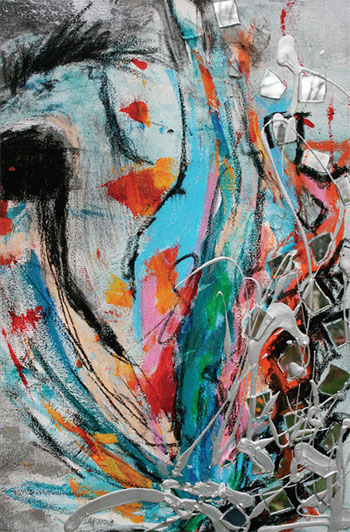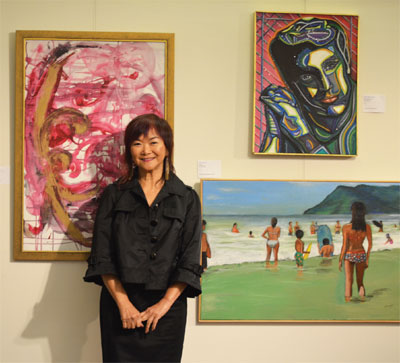Sally Tsou: Chinese art teacher enlightens young pupils
Updated: 2016-01-22 11:30
By Hua Shengdun in Washington(China Daily USA)
|
||||||||
Almost every child at the Fillmore Arts Center in Washington knows Ms Tsou, a visual arts teacher who draws beautiful bamboo and water lilies by a Chinese brush.
Sally Tsou is not only a teacher at the center but an active artist who has been invited to multiple international exhibitions around the world. She was born in Shanghai, raised in Taiwan and came to the United States at age 18.
As a Chinese artist, Tsou believes she has a lot to offer in terms of introducing Chinese culture to young generations in the US.
"Although it feels tiring to switch between the two roles, I would never quit being an art teacher," Tsou said. "I think art can transcend language and prejudice to convey culture."
Tsou explained that a water lily grows in mud, yet never is contaminated, so that is a way to describe integrity. But some of the students still do not understand, Tsou said.
However, one third grader said: "If my friends ask me to play outside, I refuse to join them because I have to finish my homework first. I can be called water lily."
All his classmates got the point, she said.
"I'm convinced art can be a cultural carrier that explains complicated Chinese philosophy by a vivid and direct way. That is why my students can learn so much from water lilies in Chinese painting," Tsou said.
At first, Tsou did not expect her art class would become the most popular art program at the center. "I have 29 students in my class, which is the biggest class size at the center," she said.
Tsou believes it is the Chinese elements of her class that pupils find most appealing.
Her class is distinctively different from other art classes, which are based on European oil painting and artistic values, according to Tsou. "The students have never used Chinese brush to draw bamboo and water lily. For them, it is very creative and cool," she said.
"Boys in third grade are crazy about drawing bamboo; their parents cut off bamboo from their backyard, and one of the boys bought me Chinese lucky bamboo," Tsou said, pointing to the bamboo at her desk.
Tsou said that parents and children find her class refreshing because they usually associate art with Europe. Chinese art emphasizes simplicity and encourages people to use their imagination, Tsou said.
This European art-dominated mentality is something Tsou said she wants to change by teaching youngsters Chinese art. People need to know there are more options beyond European arts, she said.
When Tsou decided to study fine arts in a US college, she was surprised that there was no Chinese art and few Asian arts in the curriculum.
"Though I was bored by the courses, I did learn a lot about Western arts and the methodologies of creating paintings and sculptures," she said.
Tsou believes that what she learned in college enabled her to combine Chinese arts with Western arts so that she can spread Chinese arts and culture in a way that Westerners would understand.
Tsou not only teaches Chinese arts like brush painting and ceramics but Western arts, too. That way, students can compare the different art forms, she said.
Tsou presents a Chinese brush painting and European oil painting side by side to her pupils. They feature the same subject, a mountain. She lets students explain the differences so that they can better understand composition, color and texture in different cultural contexts.
She still remembers The Rise, one of her exhibitions in which all the works were painted by brushes. Tsou said the exhibition best represents the Chinese element in her works because it shows simplicity.
"A mountain was drawn just by a couple of brushstrokes, which is simple yet powerful," Tsou said. The painting was sold to a French buyer for $10,000. He was deeply connected to the painting and it helped him to get through the darkest time of his life, according to Tsou.
For young Chinese-American artists, Tsou suggests they take risks and continuously try to express new ideas.
"I often hear young artists say: 'This is it, there is no other way,' " she said. "They are too young to say that. They should reach out to other artists to learn and to connect with them. They can combine new ideas, methodologies to add into their own art."
Tsou said she used to be shy but studying in the US has made her more expressive and honest to herself and her fellow artists.
Two of Tsou's students visited her international exhibition in Washington on Jan 9.
Quinn Defilipes, a third grader whose favorite thing to do is draw bamboo since he started taking Tsou's class, said: "Ms Tsou taught us how to draw bamboo by Chinese brush; it was so cool. I will keep signing up for her classes until I get into middle school."
"Many of the parents talked to me about my class," Tsou said. "They really like to see that their children can be exposed to more diverse art environments and get some hands-on experience in art class. One parent even told me her child used to be obsessed with the iPad after school and now he also wants to do some artworks like drawing bamboo and water lilies, according to Tsou.
"Everyone in school loves Ms Tsou; we hope there will be more teachers like her," Quinn's mother said.
Pan Jialiang in Washington contributed to this story.
|
Sally Tsou's painting Phenix. It is made of materials including ink, oil and glasses, which Tsou said symbolize the rise of a phenix. Provided to China Daily |
|
Sally Tsou, an active Chinese-American artist and a visual art teacher at Fillmore Art Center, takes a picture with her work named The Dragon at the exhibition of Ten Nation's Art in Washington on Jan 9. Pan jialiang / for Chian Daily |
(China Daily USA 01/22/2016 page11)
- Railway police nab 40,315 fugitives in 2015
- China issues blue alert for snow storms
- Blast in firework factory leaves four missing, four injured
- Struggles of a Shanxi coal mine owner in bleak industry winter
- China launches system to check authenticity of living buddhas
- China sees rising online fraud in 2015: report
- 2015 Earth's hottest year on record: US agencies
- 8 killed in car bomb near Russian Embassy in Kabul
- Researchers find possible ninth planet beyond Neptune
- Former US VP candidate Palin endorses Trump with a 'hallelujah'
- Gunmen kill at least 19 after storming Pakistan university
- Hollande makes last-chance push to curb French unemployment
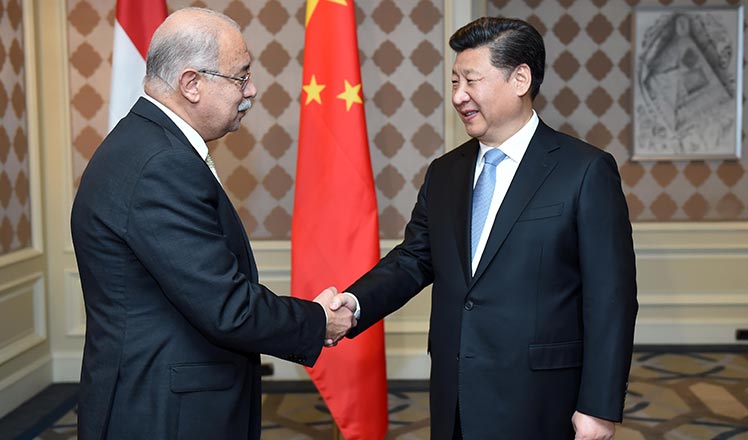
 Egyptian welcome for Chinese President Xi Jinping
Egyptian welcome for Chinese President Xi Jinping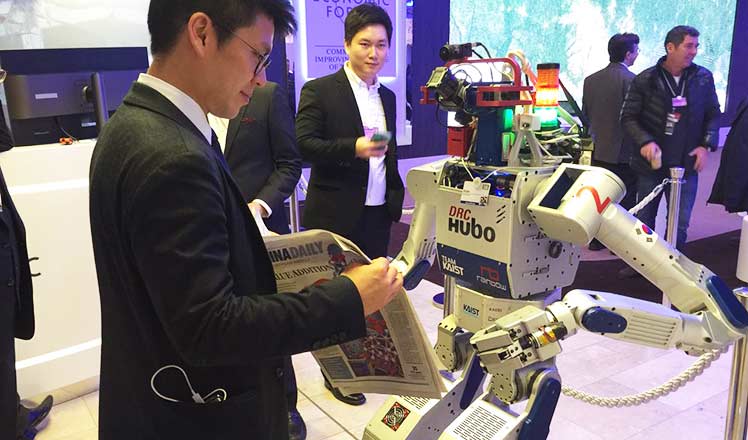
 Robots reads China Daily to stay up to date with news in Davos
Robots reads China Daily to stay up to date with news in Davos
 China's Yao honored with Crystal Award in Davos
China's Yao honored with Crystal Award in Davos
 Happy memories warm the winter
Happy memories warm the winter
 World's images of the day
World's images of the day
 Xi boosts ties with Saudis
Xi boosts ties with Saudis
 Cold wave sweeps across China
Cold wave sweeps across China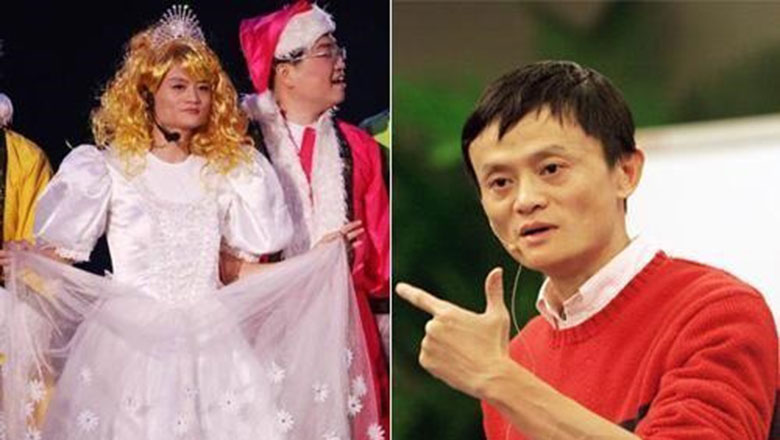
 Internet tycoons' wacky costumes are annual galas' highlight
Internet tycoons' wacky costumes are annual galas' highlight
Most Viewed
Editor's Picks

|

|

|

|

|

|
Today's Top News
National Art Museum showing 400 puppets in new exhibition
Finest Chinese porcelains expected to fetch over $28 million
Monkey portraits by Chinese ink painting masters
Beijing's movie fans in for new experience
Obama to deliver final State of the Union speech
Shooting rampage at US social services agency leaves 14 dead
Chinese bargain hunters are changing the retail game
Chinese president arrives in Turkey for G20 summit
US Weekly

|

|
